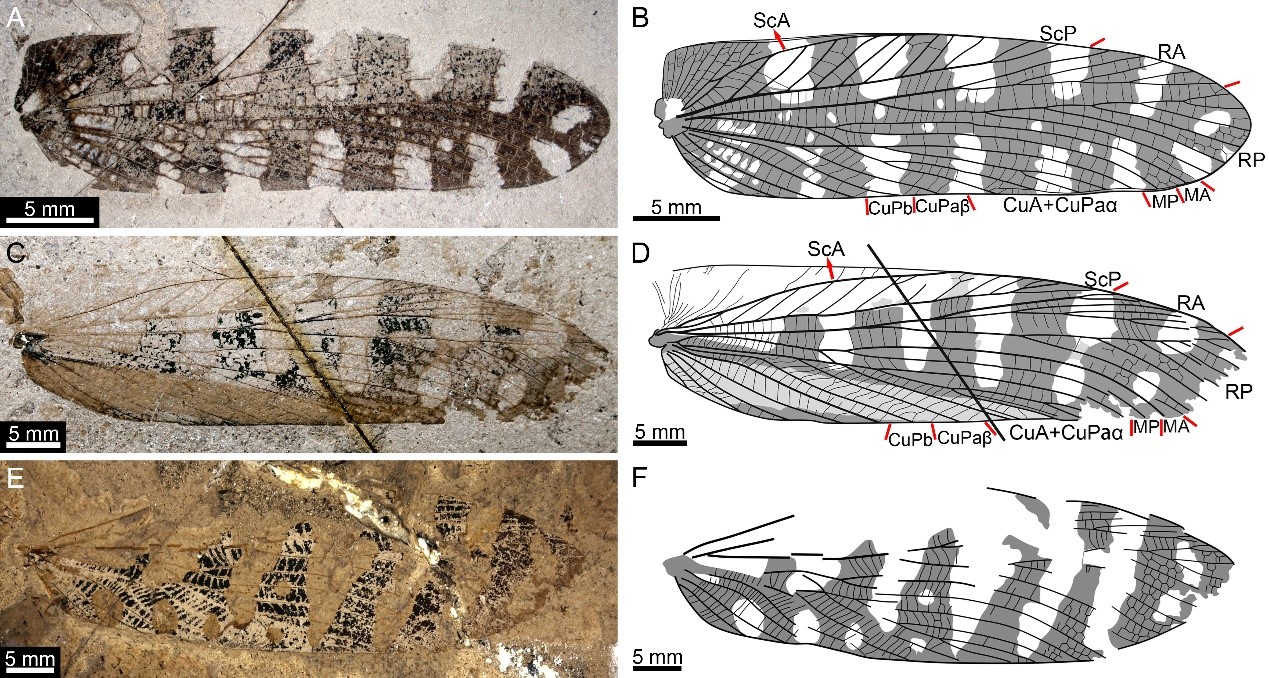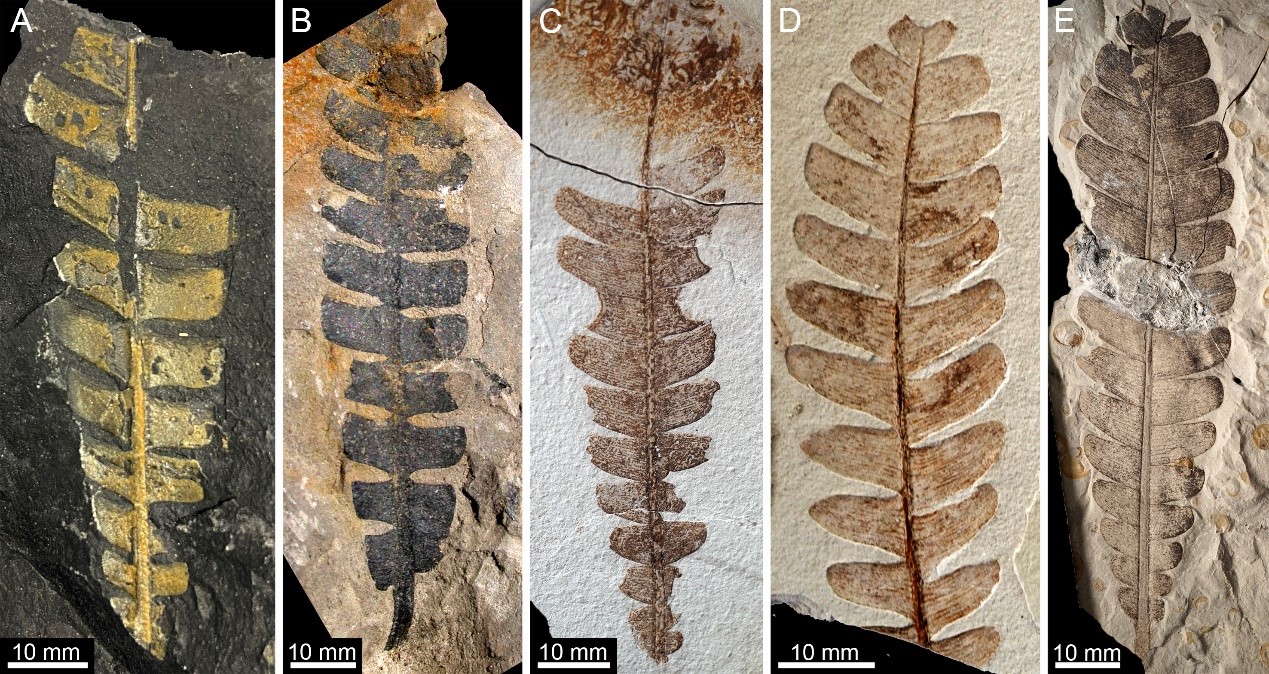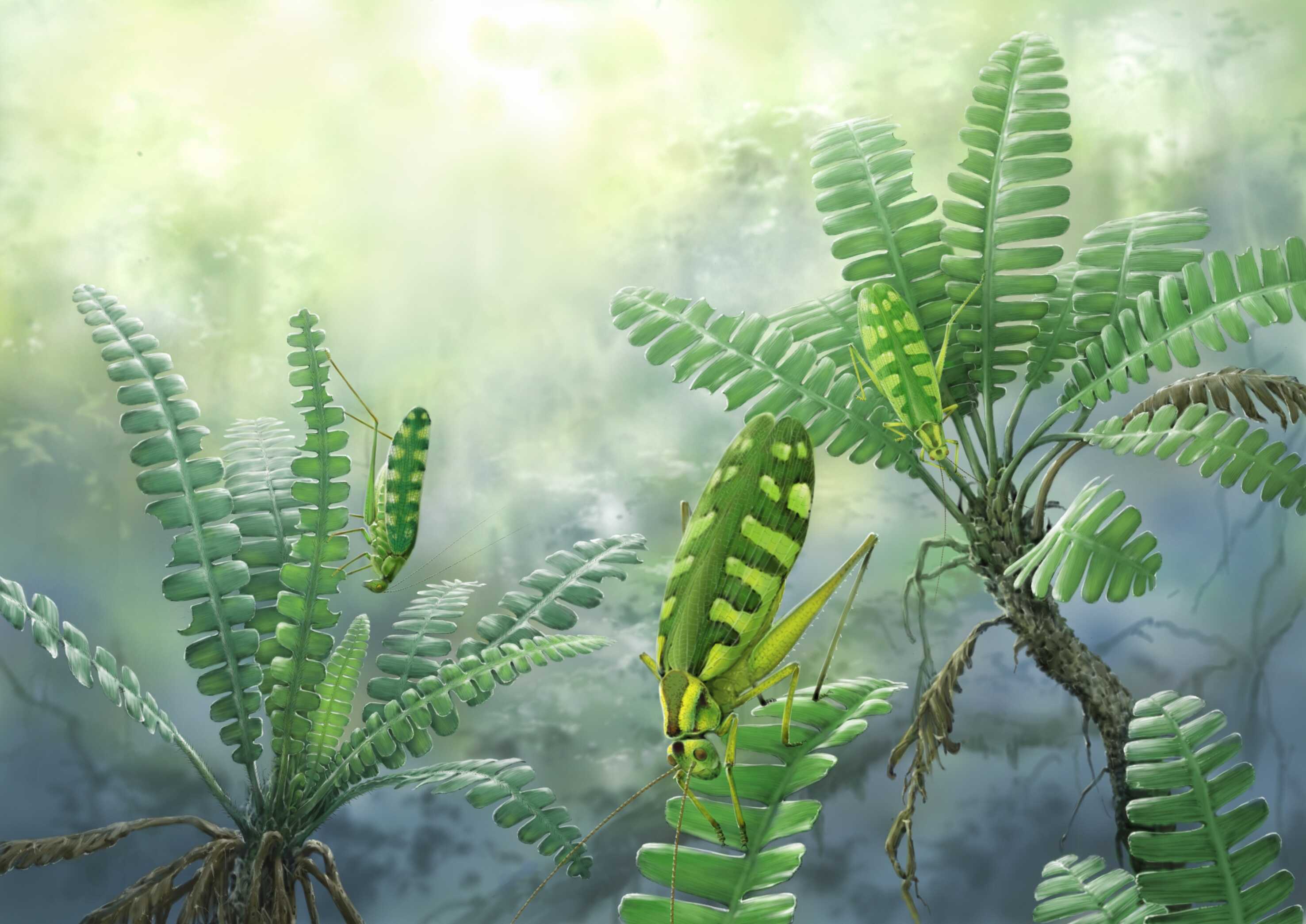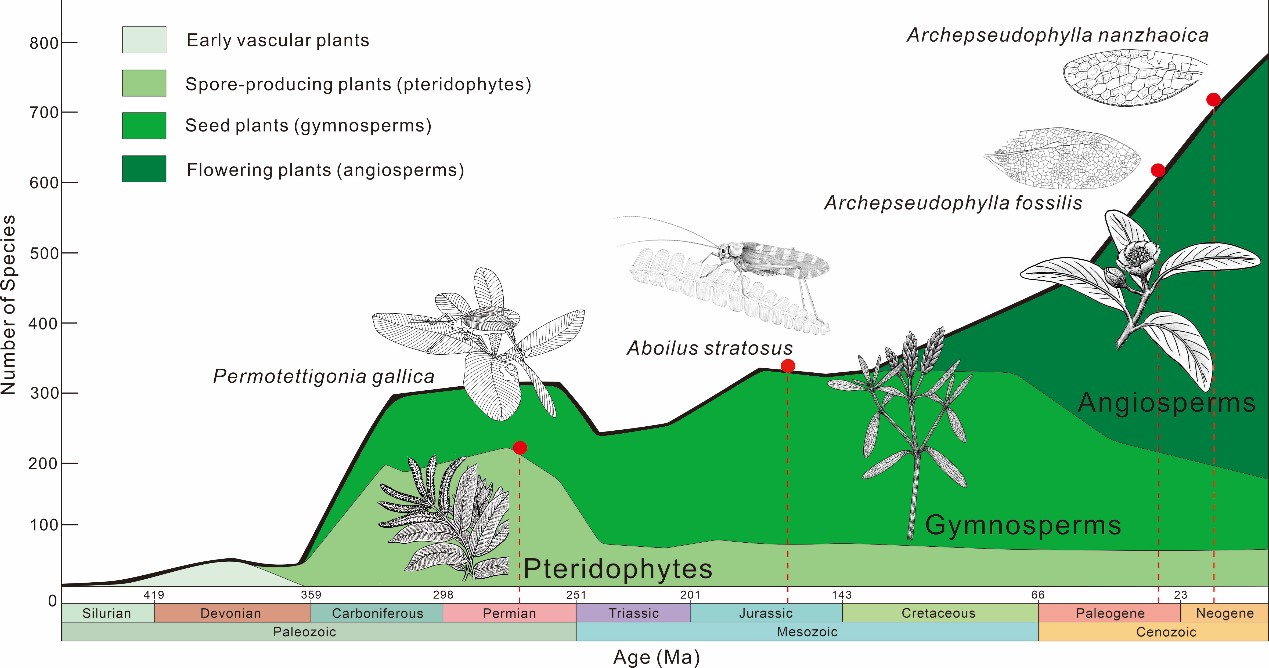A research team led by Prof. HUANG Diying from the Nanjing Institute of Geology and Palaeontology of the Chinese Academy of Sciences (NIGPAS) has identified three species of Jurassic orthopterans-an insect group that includes grasshoppers, crickets and katydids-with forewing patterns nearly identical to the leaves of bennettitales, an extinct, cycad-like seed plant.
The fossils, belonging to the Prophalangopsidae family's Aboilinae subfamily, were unearthed from the Daohugou Biota in Inner Mongolia, northeastern China, a site dating to approximately 165 million years ago. Published recently in the journal Geology, the study marks the first definitive evidence of co-preserved mimicking insects and their plant models in the same geological bedding plane.
Under predation pressure, animals evolve diverse defensive traits, and mimicry ranks among the most effective strategies for insects. Leaf mimicry is widespread across insect orders such as Lepidoptera (butterflies and moths), Orthoptera, Neuroptera (lacewings), Phasmatodea (stick insects) and Mantodea (praying mantises). However, fossil evidence of this adaptation has long been scarce and often inconclusive-until now.
The team analyzed the Daohugou fossils and identified two distinct mimicry patterns:
In Aboilus stratosus, the forewings feature six-seven transverse rectangular bands, bisected by a longitudinal stripe running from base to tip. This pattern closely resembles the distal (outer) portion of fronds from Anomozamites, a genus of bennettitales.
In Sigmaboilus sp., a nearly longitudinal, inclined stripe crosses the forewing, connecting six transverse rectangular bands. The design mimics one lateral side of an Anomozamites frond-appearing as if the frond was split along its central rachis to form a symmetrical half. When at rest, the insect's paired forewings would align to create the illusion of a complete Anomozamites frond, with leaflets arranged along a central axis.
Bennettitales were a dominant component of Mesozoic floras before flowering plants (angiosperms) rose to prominence. Anomozamites leaves, in particular, were widespread across Laurasia-a ancient supercontinent encompassing modern-day Asia, Europe and North America-from the Late Triassic to the Early Cretaceous, and they formed a key part of the Daohugou flora.
Statistical analysis revealed a striking correlation: both the Aboilinae orthopterans and Anomozamites exhibited similar trends in species richness-peaking in the Middle Jurassic and declining by the Early Cretaceous. This pattern suggests a potential ecological association between the two groups.
Additional clues support this link: Aboilus and Sigmaboilus were large herbivorous insects in the Daohugou Biota, and Anomozamites leaves from the same fossil beds show shallow-to-deep scalloped incisions along their margins-traces interpreted as herbivory damage. The researchers infer that these Jurassic leaf-mimicking insects lived on and fed on Anomozamites, and that this sustained ecological interaction may have provided the functional context for the evolution of their leaf-mimicry trait.
The study further proposes that rising predation pressure during the Jurassic fueled the evolution of leaf mimicry in orthopterans. While stem birds were rare at the time, the Daohugou Biota hosted a diverse array of predators capable of preying on prophalangopsids (the group to which the fossil orthopterans belong). These included:
Volaticotherium, a gliding insectivorous mammal relative;
Epidendrosaurus and Epidexipteryx, small arboreal dinosaurs;
Jeholopterus, an insectivorous anurognathid pterosaur.
In the Cenozoic Era (the "Age of Mammals," beginning ~66 million years ago), katydids-a subgroup of orthopterans-evolved more sophisticated mimicry forms, such as imitations of dead leaves or partially eaten leaves. This increased specialization likely reflects intensified predation pressure, driven by the emergence and rapid diversification of modern bird lineages after the Late Cretaceous and the subsequent radiation of passerine (perching) birds during the Paleogene-Neogene transition (~23 million years ago).
Orthopterans are among the most abundant herbivorous insects today, and fossil records show their mimicry strategies have adapted to shifts in dominant plant groups over geological time: from spore-bearing plants and gymnosperms (e.g., conifers, cycads) in the Paleozoic and Mesozoic eras to angiosperms in the Cenozoic.
This finding highlights the dynamic interplay between plant community succession, predation pressures and insect defensive traits. It also expands scientific understanding of the ecological significance and evolutionary history of leaf mimicry in orthopterans.
The research team included collaborators from NIGPAS and Ludwig-Maximilians-Universität München (LMU Munich) in Germany. This work was supported by funding from the National Key Research and Development Program of China and the National Natural Science Foundation of China, among other sources.

Leaf-mimicking orthopteran fossils of Prophalangopsidae from the Daohugou biota. (Image by NIGPAS)

Fossil leaves of Anomozamites. (Image by NIGPAS)

Reconstructions of two prophalangopsid species exhibiting distinct types of mimicry on Anomozamites leaves. (Image by NIGPAS)

Paleoart illustration showing the two species' leaf mimicry among Anomozamites in the Daohugou biota. (Image by NIGPAS)

The relationship between orthopteran leaf mimicry and the dominant plant groups throughout different geological periods. (Image by NIGPAS)






